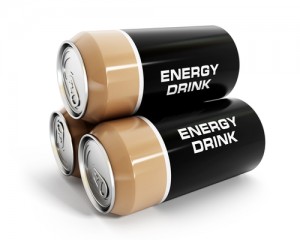 Monday saw a unanimous panel of Massachusetts’ intermediate level appellate court reject a policyholder’s ensuing loss arguments. In H.P. Hood LLC v. Allianz Global Risks U.S. Ins. Co., 2015 Mass. App. LEXIS 175, 2015 WL 6629484 (Mass., Nov. 2, 2015), the justices held that the loss of over two million bottles of an energy drink was not separate or different in kind but rather “directly caused by, and completely bound up in” the excluded peril — faulty workmanship and design of the bottle caps.
Monday saw a unanimous panel of Massachusetts’ intermediate level appellate court reject a policyholder’s ensuing loss arguments. In H.P. Hood LLC v. Allianz Global Risks U.S. Ins. Co., 2015 Mass. App. LEXIS 175, 2015 WL 6629484 (Mass., Nov. 2, 2015), the justices held that the loss of over two million bottles of an energy drink was not separate or different in kind but rather “directly caused by, and completely bound up in” the excluded peril — faulty workmanship and design of the bottle caps.
The insured produced a high-performance protein supplement known as Myoplex for Abbott Laboratories, and it had contracted to manufacture some forty million bottles in 2009. The drink was a “shelf stable” beverage that did not require refrigeration until after it was opened, and that meant that the bottles had to maintain a hermetic seal. In May of 2009, “secure seal” testing revealed that some 7% of the bottle caps were failing to maintain a seal, and Abbott ultimately rejected all two million bottles in the May 2009 production run. Subsequent investigation disclosed that the liners in the caps became more slippery over time. That meant that the caps needed more torque than the existing production process called for to seal properly.
The policyholder’s claim was denied, and litigation followed. After the trial court granted the insurer’s motion for summary judgment, the case moved to the Appeals Court of Massachusetts. On November 2nd, that court affirmed in an opinion authored by Justice James Milkey.
The parties’ principal arguments were directed towards whether this was an instance of “direct physical loss or damage.” The carrier contended that there had been no actual property damage because there was no showing that a single bottle was contaminated, characterizing the destruction of two million bottles as a “business decision.” The insured, on the other hand, argued that the requisite property damage had occurred once doubts were raised as to the product’s fitness for human consumption, causing it to lose all value.
The justices saw no need to reach that issue, however, holding instead that the loss was barred by an exclusion for “faulty workmanship, material, construction or design, from any cause.” In the panel’s mind, the change in the characteristics of the liners as they aged was faulty material, the use of incorrect torque was faulty workmanship, and the production process’s failure to take the increasing slipperiness into account was faulty design.
The policyholder countered that while the exclusion might preclude coverage for the bottle caps, it did not operate to bar coverage for the loss of the Myoplex product inside the bottles. The exclusion was subject to an ensuing loss provision that recited that “if physical loss or damage not otherwise excluded by this policy . . . results, then . . . such resulting physical loss or damage is covered by this policy.”
This argument, while made with what the court called “considerable force,” fell on deaf ears. The justices noted that ensuing loss provision raised “interpretive challenges” that frustrated many courts; indeed, the Fifth Circuit had gone so far as to say that “[a]t first glance,” an exclusion with an ensuing loss provision appeared “to be self-contradictory gibberish.” The result was that courts had looked to a whole host of factors (such as whether the subsequent loss was “wholly separate” from the excluded damage, whether there had been “a break in the change of causation,” or whether the later damage was “different in kind”) when deciding whether they were dealing with a covered ensuing loss.
The justices then held that there had been no covered ensuing loss under the facts at bar. In the words of the opinion:
Whatever else can be said about the case before us, it is not one where an excluded occurrence involving initial property damage led to other property damage of a different kind. To the extent that Hood suffered property damage potentially subject to coverage, that loss was directly caused by, and completely bound up in, the increased risk of future spoilage indicated by the secure seal testing. Both conceptually and practically, the losses entailed here cannot reasonably be characterized as “separate.” Instead, a problem with the bottle cap liners directly rendered the entire product unsalable. The loss of that product falls squarely within the exclusion language.
The court also observed in passing that while most courts construing similar faulty workmanship and design exclusions have dealt with commercial general liability coverage, it saw “no convincing reason why the cases construing the scope of similarly wording defective workmanship exclusions should turn on the type of policy at issue.”

